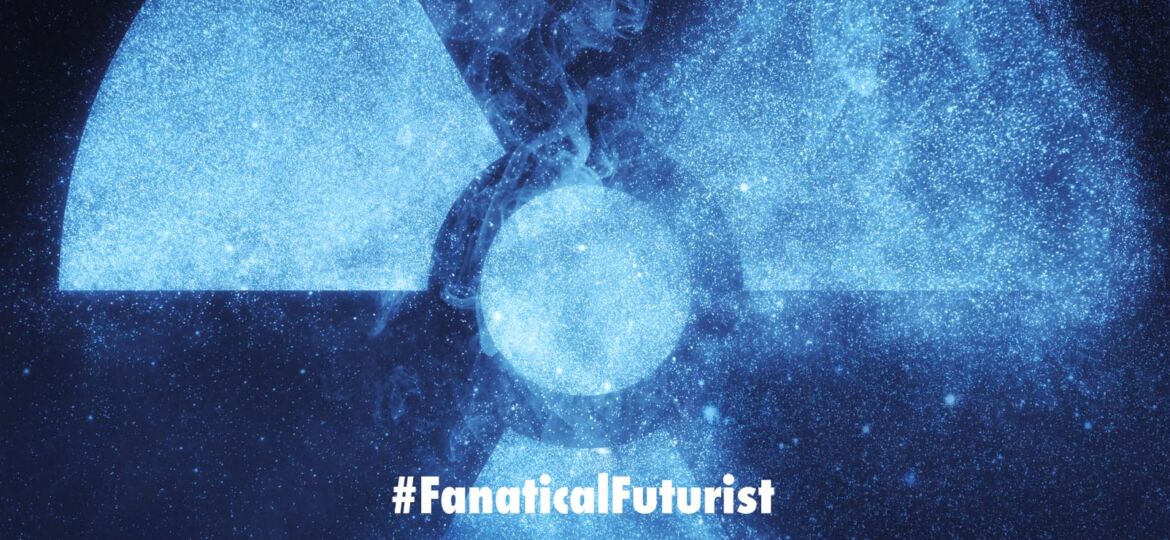
WHY THIS MATTERS IN BRIEF
Nuclear reactors used to be huge, but now they’re about the size of a truck and powerful and the US just gave the thumbs up to the first of a new batch.
 Love the Exponential Future? Join our XPotential Community, subscribe to the podcast, future proof yourself with courses from XPotential University, read about exponential tech and trends, connect, watch a keynote, or browse my blog.
Love the Exponential Future? Join our XPotential Community, subscribe to the podcast, future proof yourself with courses from XPotential University, read about exponential tech and trends, connect, watch a keynote, or browse my blog.
Nuclear power is having a renaissance as countries everywhere consider building more reactors in order to help them eliminate fossil fuels from their energy generation mix. As such the number of breakhroughs in the sector are booming whether it’s in the form of 3D printable nuclear reactors, Thorium reactors, floating nuclear reactors, or even mini reactors.
And now, in another boost for nuclear the first Small Modular Reactor (SMR) design has been approved for certification by the US Nuclear Regulatory Commission (NRC). NuScale’s tiny reactor design, and it is literally tiny, promises safe clean energy at radically reduced cost, land use, and installation time.
The Future of Energy 2050, by keynote Matthew Griffin
The NRC released news last week that its staff have been directed to make a final rule certifying the NuScale reactor design for use in the United States. This is just the seventh design approved by the NRC since it was established in 1974, and the first of a coming wave of technologies designed to make nuclear power cheaper, easier and safer to implement than ever before.
The keys to this small modular reactor’s advantages lie in its small size and modularity. Rather than having to build each reactor on site, custom designed for the location, NuScale can mass-manufacture its light water reactor modules in a factory and then ship them worldwide for a relatively quick and painless installation.
Each roughly cylindrical module stands around 65 ft (20 m) high, with a 9-foot (2.7-m) diameter, and produces 77 megawatts by pushing steam out through a turbine. A given power plant could run anywhere between four and 12 of these modules, submerged in a water tank, so an overall power station will be good for between 308 and 924 MW. Nuclear will be a key baseline generator for renewables-based power grids in many areas, and NuScale says its mass production capabilities will make it cost-competitive even with some fossil-fuelled options.
Learn more about the new mini reactors
Like most other generation IV nuclear designs, the NuScale plant is designed to shut itself down safely in an emergency without any operator input or power requirements. The feedwater and steam exit valves will close in the event of an emergency situation, and a secondary set of valves will open to depressurize steam from the reactor core into the containment vessel surrounding the reactor. As this steam condenses, it’ll be taken back into the core and circulated through this process again. NuScale says this’ll put the plant in a stable, safe shutdown, and that if anything goes catastrophically wrong, the giant water tank housing the reactor modules, with its concrete roof, provides a final line of defense designed to be earthquake-proof and impermeable to aircraft impacts.
The plant’s passive safety measures and tiny ground footprint compared with current nuclear plants make it possible – in the company’s opinion, anyway – to put these plants much closer to where the energy’s used, cutting down on transmission costs and losses.
The first NuScale power plant is set to begin generating power in 2029, with all six of its modules due to come online in 2030. Located at the Idaho National Laboratory, the Carbon Free Power Project will generate some 462 MW, much of which is already contracted to be sold to power distribution companies for a 40-year period.
This final rule on certification will be the final step in a process NuScale initiated in 2016. Check out some information on the Carbon Free Power Project and NuScale SMR in the video above.
Source: US Nuclear Regulatory Commission
















